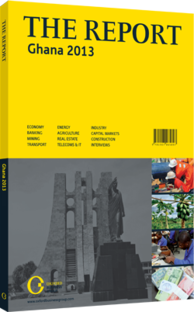OBG talks to Kofi Wampah, Governor, Bank of Ghana (BoG)

Interview: Kofi Wampah
energy supply conditions and increased oil production are likely to support to growth prospects. Gas infrastructure development and its anticipated multiplier effects will further aid the economy via the industrial sector.
These developments continue to impact the Ghanaian economy. Despite the improvement in our trade balance, we have seen a slowdown in import demand. It is expected that the proceeds from Ghana Cocoa Board’s loan syndication and the issuance of the Eurobond would add up to $2bn during the second half of 2013, which would shore up international reserves.
To what extent will the BoG’s monetary policy need to change to account for inflation levels?
KOFI WAMPAH: Monetary policy in 2013 is focused on maintaining price stability to encourage sustainable economic growth. Specifically, an end-year inflation target has been set at 9.0 plus 2%. Ghana has achieved single-digit inflation for over two years, ending 2012 at 8.8%. In the first half of 2013, however, fuel price adjustments and some fiscal pressures pushed up inflation to 11.6% in June. The BoG has indicated its policy commitment to keep inflation moderate in the second half of 2013.
How would you describe the performance of Ghana’s banking industry in the first half of 2013?
WAMPAH: The sector continued to record improvements in spite of the country’s economic challenges during the first half of 2013. Broadly, the sector was adequately capitalised with the capital adequacy ratio averaging 17.96% for the industry by the end of June 2013. Asset growth was also strong at 24.4%, funded mainly by higher deposit growth. In terms of asset quality, the non-performing loan ratio improved to 12.8% from 13.2% a year ago. The BoG will continue to enforce prudential regulations to ensure stability of the financial system to enhance financial intermediation efforts in the economy. The continuous reduction in credit risk, the main risk that banks face, is expected to strengthen bank balance sheets in 2013 and beyond.
How sustainable is Ghana’s current debt situation?
WAMPAH: While the public-debt-to-GDP ratio, currently at 44%, may not be adequate to provide buffers against shocks, the stress-test analysis suggests that Ghana remains at a moderate risk of debt distress in line with the Debt Sustainability Analysis (DSA).
Meanwhile, the government has noted large fiscal and current account deficits, and has embarked on fiscal consolidation that includes additional revenue measures and expenditure rationalisation to rein in the high deficits. This, together with stronger real GDP growth and higher export levels post oil and gas production, is expected to contribute to a better DSA baseline in the medium term. The government also intends to reduce borrowing and borrowing costs via the debtmanagement strategy, including to broaden the range of instruments offered in the domestic markets, extending the yield curve by issuance of seven- and 10-year fixed-rate bonds, restricting non-concessional loans to economically viable and self-financing projects.
What is your outlook on growth in the sub-region?
WAMPAH: The IMF regional World Economic Outlook expects growth to accelerate moderately in 2013-14, with projections of 5.1% for sub-Saharan Africa and rapid expansion of the sub-region on the back of rising foreign direct investments and macroeconomic stability. This, however, is expected to be moderated by the effects of the US Federal Reserve System’s statement about the possibility of a slowdown in quantitative easing. Again, weak commodity prices, and a decline in direct investments by major emerging market economies may pose some risks to the region. These external developments may weigh on Ghana’s growth prospects through the trade channel. However, the impact is likely to be countered by improved growth prospects following the pick-up in economic activity during the second quarter of 2013, as seen by positive growth in the real composite index of economic activity, rebound in consumer confidence and improved credit conditions. Better
You have reached the limit of premium articles you can view for free.
Choose from the options below to purchase print or digital editions of our Reports. You can also purchase a website subscription giving you unlimited access to all of our Reports online for 12 months.
If you have already purchased this Report or have a website subscription, please login to continue.

